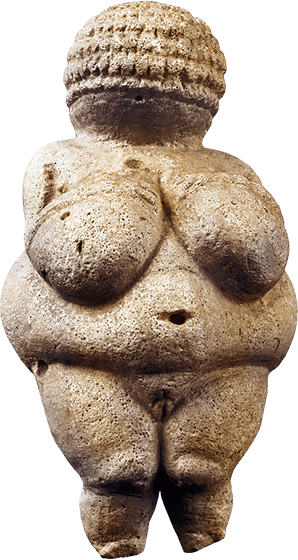Concept
BoudoirVENUS is a project that intimately explores the essence of womanhood through the enigmatic beauty of the Venus of Willendorf statue. By combining ancient symbolism with contemporary objects and symbols associated with womanhood, this project delves into the hidden desires and multifaceted nature of femininity. The boudoir, a private space historically reserved for women, serves as a sanctuary for authentic self-expression and liberation.
boudoirVENUS weaves a profound philosophical foundation for its exploration by drawing from a rich tapestry of perspectives, including Lacan, Freud, Zizek, and other eminent thinkers. Lacan's psychoanalytic theories unlock the intricate workings of the subconscious and the transformative influence of desire in shaping identities[1]. Freud's concept of the uncanny resonates deeply within the project, navigating the boundary between familiarity and unsettling fascination[2]. Zizek serves as a bridge between classical psychoanalysis and modern philosophy, engaging with Lacanian ideas and examining ideology, enjoyment, and the complexities of the human psyche[3],[4].
Expanding this philosophical tapestry, boudoirVENUS embraces the contributions of feminist thinkers such as Simone de Beauvoir, Judith Butler, and Hélène Cixous. De Beauvoir's feminist existentialism sheds light on the construction of gender roles and the struggle for authentic self-expression within patriarchal societies[5]. Butler's notion of gender performativity challenges binary understandings of gender, inviting viewers to deconstruct societal norms and embrace the fluidity of identity[6],[7]. Cixous's exploration of écriture féminine celebrates the subversive power of women's writing and the reclamation of their voices in a male-dominated literary landscape[8]. Together, these feminist thinkers offer profound insights into the complexities of womanhood, desire, and the liberation of self-expression. By seamlessly intertwining their diverse perspectives, boudoirVENUS presents a holistic exploration that transcends boundaries and invites viewers to reflect on the interplay between culture, gender, and identity.


















Embedded within the multidimensional narrative of boudoirVENUS lies the Venus of Willendorf, an ancient artifact resonating with centuries of cultural perceptions. Traditionally, the female body has been objectified and depicted through the lens of the male gaze. However, this project disrupts that tradition by placing Venus in the empowering and intimate space of the boudoir. Here, the female gaze takes precedence, fostering a subversive method of self-expression and reclaiming the female narrative.
In this private realm, boudoirVENUS embraces contemporary symbols associated with womanhood, inviting viewers to reflect on the evolving definitions of femininity across time and cultures. The integration of Birkin bags, iPhones, Gucci glasses, and Queen Elizabeth's hats encourages contemplation of the interplay between culture, gender, and identity.
Through its condensed yet evocative exploration of womanhood, desire, and the liberation found within intimate spaces, boudoirVENUS invites viewers to critically examine the construction of gender and embrace the freedom of self-expression. It provokes a nuanced understanding of womanhood while fostering introspection and contemplation.
1. Lacan, Jacques. "Écrits: The First Complete Edition in English." W. W. Norton & Company, 2006.
2. Freud, Sigmund. "The Uncanny." Penguin Classics, 2003.
3. Zizek, Slavoj. "The Sublime Object of Ideology." Verso, 1989.
4. Zizek, Slavoj. "Enjoy Your Symptom!: Jacques Lacan in Hollywood and Out." Routledge, 1992.
5. de Beauvoir, Simone. "The Second Sex." Vintage Books, 2011.
6. Butler, Judith. "Gender Trouble: Feminism and the Subversion of Identity." Routledge, 2006.
7. Butler, Judith. "Bodies That Matter: On the Discursive Limits of 'Sex'." Routledge, 1993.
8. Cixous, Hélène. "Three Steps on the Ladder of Writing." Columbia University Press, 1993.
r